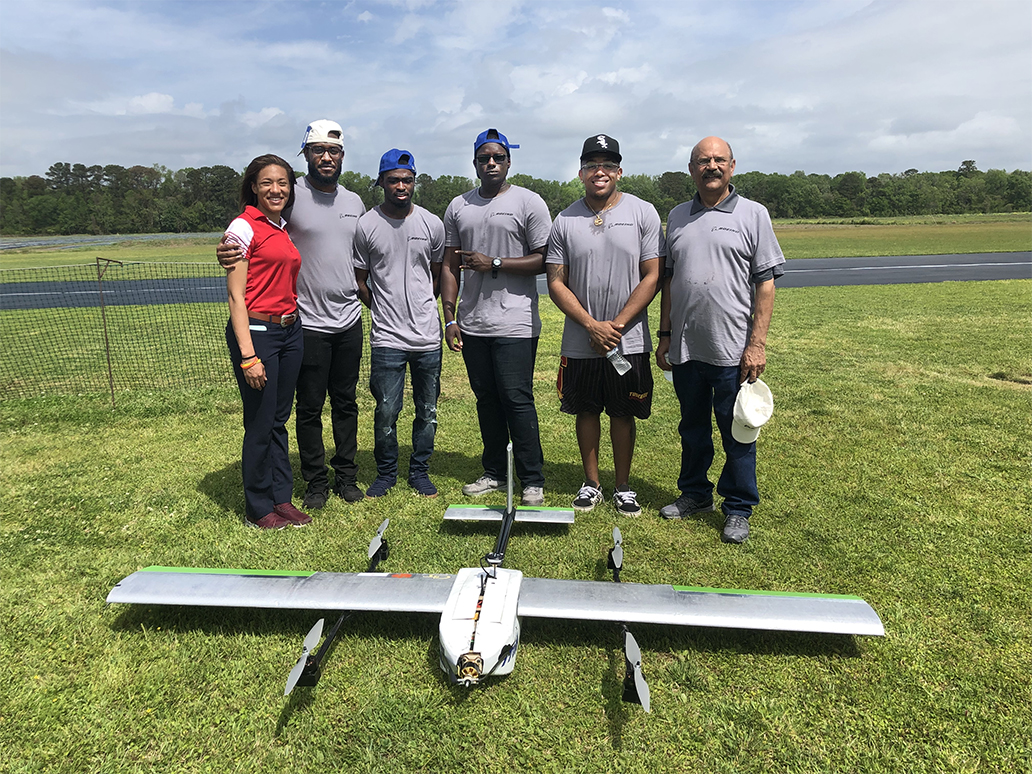Experimental Aerodynamics Laboratory
The experimental aerodynamic facilities consist of two wind tunnels, two free surface water channels and a flow-visualization smoke tunnel.
(a) Wind Tunnels
The Department operates a low speed closed circuit wind tunnel facility with a 2' x 3' test section. TAn Aerolab low speed open-circuit 1ft x 1ft cross section wind tunnel is available for the aerodynamic laboratory experihe test section is equipped with a 6 component pyramidal balance. A computer-controlled 16-port solid- state pressure data acquisition is also available. This equipment is used for the aerodynamics laboratory class as well as for faculty and undergraduate research and design projects.
The 2ft x 3ft Low Speed Close Circuit Wind Tunnel
ments. The wind tunnel has a sting balance with computerized data acquisition and model mount control system. Pressure data experiments include a boundary mouse and plate, various models such as a circular cylinder, sphere, wing etc.
The Department also has a smoke flow visualization tunnel with several experiments including flapped wing, rotating cylinders etc.
Flow Visualization Smoke Tunnel
(b) Water Tunnels
A free surface water channel is with a 15in x 20in test section is available in the Department. This facility has optical access from the sides, bottom and a down stream window. The water channel has a pressurized four-port dye injection system for flow visualization. The water channel is used for instruction as well as research.
15in x 20in Water Tunnel
The Department also has a table-top version of the free surface water channel with a test section of 7in x 10in. This water channel that is used primarily for instructional purposes, has a sting balance as well as a dye injection system for flow visualization. Several experiments such a cylinder, delta wing etc. are available.
Table Top Water Tunnel
Typical Flow Visualization Experiment
(c) Volumetric Particle Image Velocimetry
A state-of-the-art volumetric PIV system is available for non-intrusive flow diagnostics. This system consists of four 24 MP cameras, a Quantel Evergreen 200mJ/pulse laser with a 532nm wavelength. The maximum single frequency for the system is 15 Hz and in the dual pulse mode is 7.5 Hz. The measurement volume is 0.14 m x 0.14m x 0.1m.
Typical volumetric data over a slender delta wing Volumetric PIV System Camera Mount
Typical Data Propulsion Laboratory
The propulsion facility consists of a fully instrumented jet engine. The engine is computer-controlled data acquisition system. The students can perform several experiments using this facility. The students also learn about testing electric propulsion systems for unmanned aerial systems for which a fully instrumented test stand is available. A small turbojet for student projects is also available.
Automatic Flight Controls Laboratory
Several experiments are available to students to strengthen their concepts of automatic controls and application to flight controls. These include:
Mass-Spring-Damper System
This system provides an understanding of rigid body PID control, , lead/lag compensators, phase and gain margin, trajectory tracking, and regulation. Students also conduct experiments using high order collocated and non-collocated system control. Mode shapes, natural frequencies, transient and frequency responses are also studied.
(b) Hardware in the Loop (HITL) Facility
An HITL setup is used to teach concepts of automatic flight control. This setup consists of an arduino-based autopilot that is linked to the Matlab aerospace toolbox. An open-source mission planner and X-plane is used for the simulation environment. Students implement the control algorithms on low cost UAVs.
Structures Laboratory
The structures laboratory provides hands-on activities for material testing, composite materials layup (including vacuum bagging) and measuring stresses using strain-gauged simple cross sections as well as built-up structures.
Flight Vehicle Design Laboratory
The laboratory has an array of computers running Windows for student course and project work, as well as for faculty research and curriculum development. Some of the computers were acquired by donations from alumni. The laboratory also has a large out-of-window flight simulation environment based on Micorsoft Flight simulator that is used for research as well as teaching aircraft performance, and stability and control. The various software packages available are Unigraphics NX, NASTRAN, Multifoil, Star CCM+, Matlab with Simulink and Aerospace Tool Box.
The Department also has a 6-node (4-processor/node) cluster computer that is used by students to learn computational fluid dynamics and structural mechanics in a parallel computational environment.
Satellite Laboratory
The Department is aggressively pursuing the development of a cube-sat program. Students use a nanosat simulator gain hands-on experience on various systems such as systems, structural, electrical & thermal engineering, attitude determination & control in a simulated microgravity environment. Students also learn satellite communication, command & data handling, and systems integration.
Model Fabrication Laboratory
This laboratory is used to build models for the wind tunnel, and is used as a shop for various student design projects, such as a radio-controlled airplane, a model for aircraft fuel tank and gauge, and an inverted V-tail for an aircraft design. The department is presently proposing to expand the capabilities of this laboratory to include structural testing of models.



